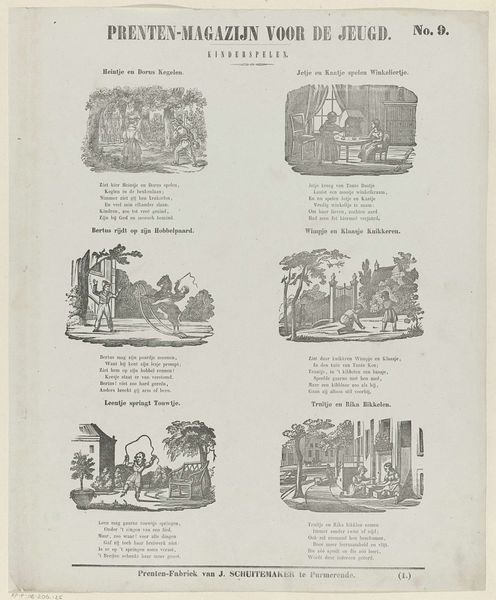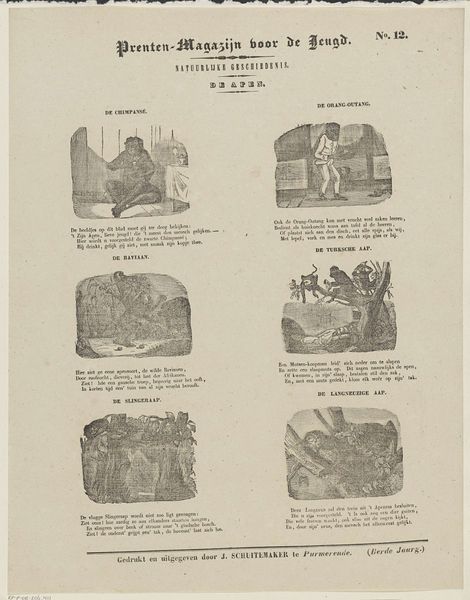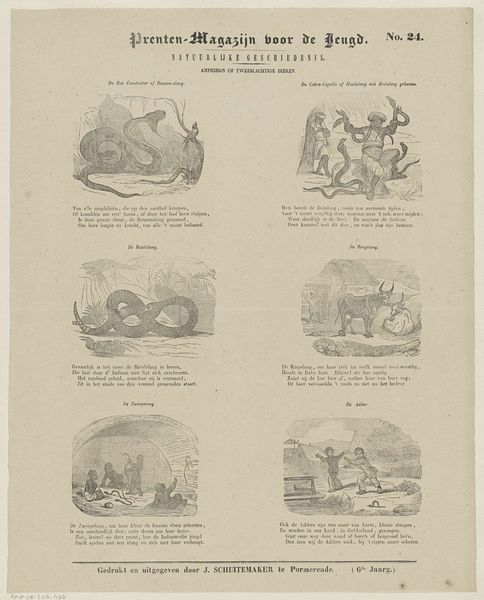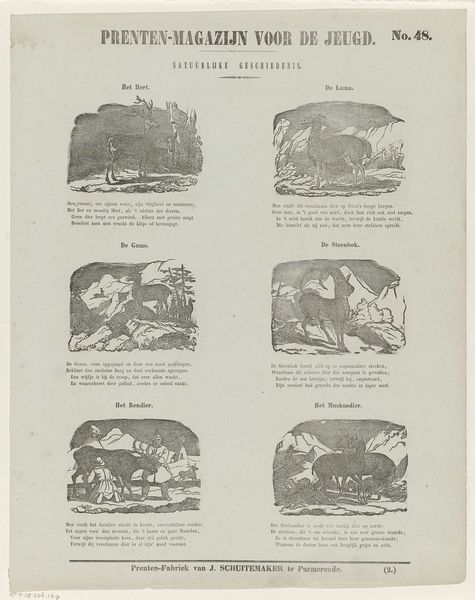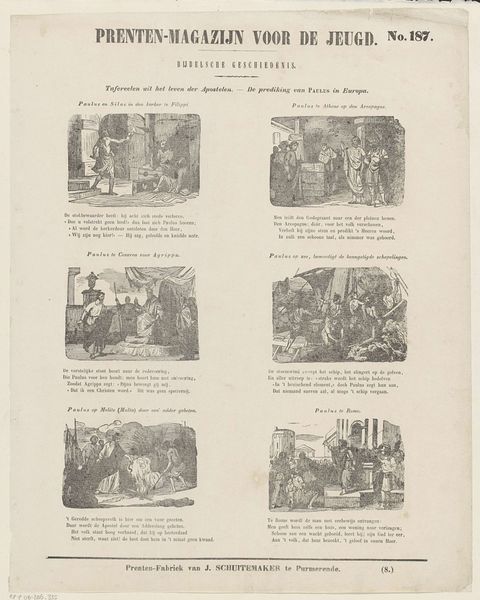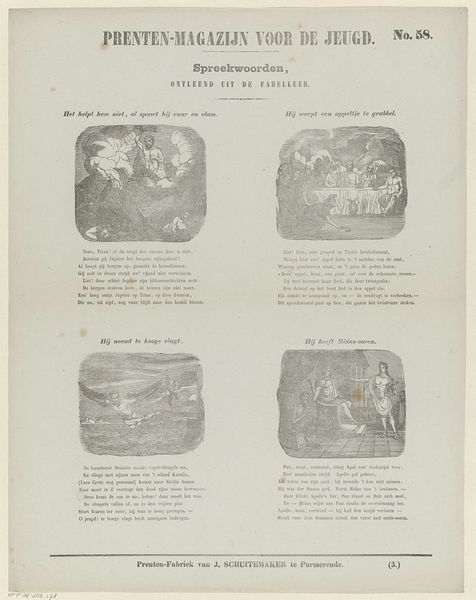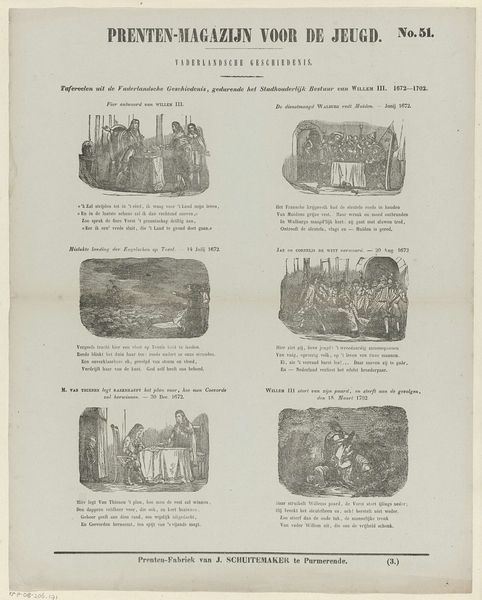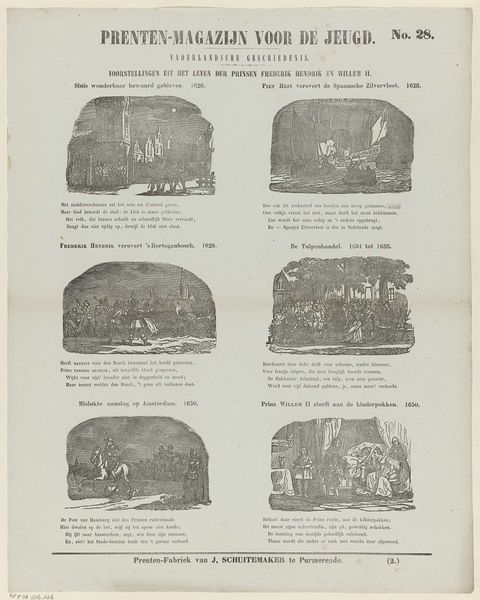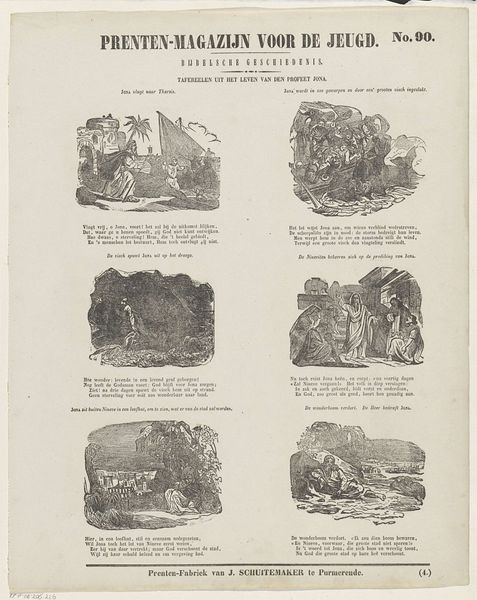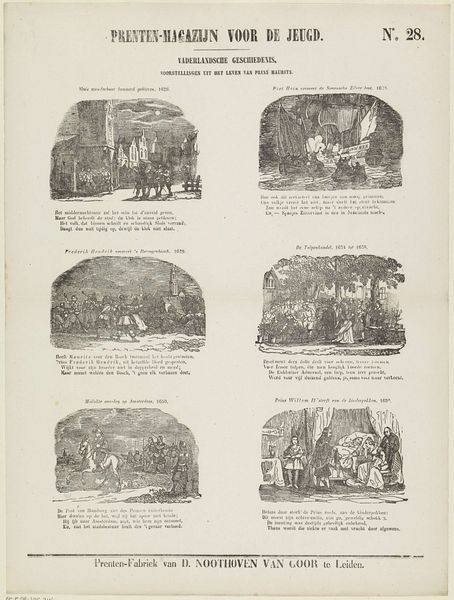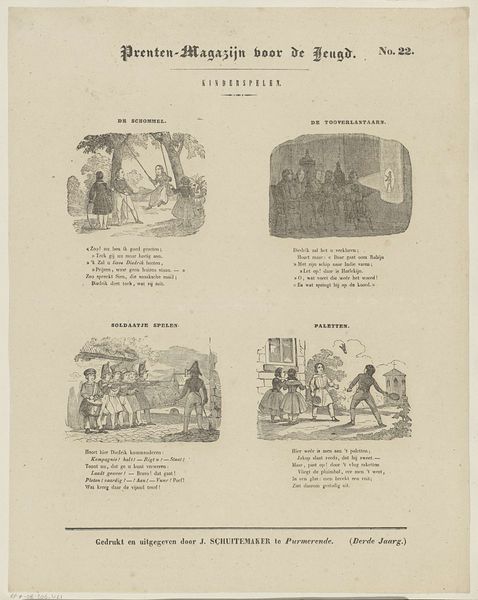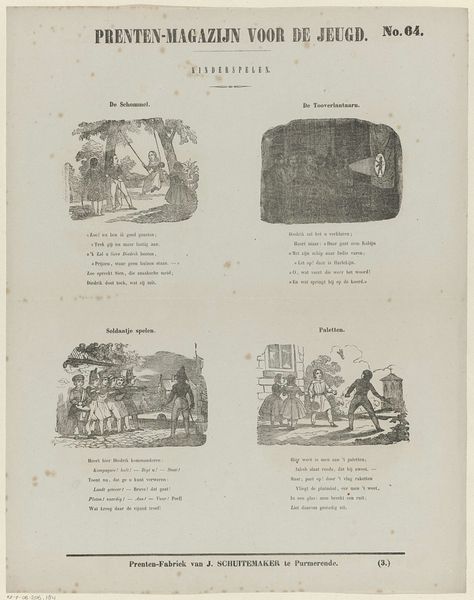
print, woodcut, engraving
# print
#
woodcut
#
naturalism
#
engraving
Dimensions: height 425 mm, width 337 mm
Copyright: Rijks Museum: Open Domain
Curator: This print, titled "De Apen," which translates to "The Apes," was created around 1850 by Jan Schuitemaker. It seems to be an educational print, a collection of woodcut and engraved images showcasing different species of apes. Editor: It’s striking. Even within the somewhat rigid format of the page, a real sense of life comes through. There’s a somber mood, heightened by the limited greyscale. Each ape vignette seems captured mid-action, mid-thought. Curator: Indeed. Schuitemaker's decision to represent apes in this way speaks to the growing 19th-century interest in natural history, and, perhaps, to the debates surrounding evolution. He isn't merely presenting anatomical studies, he’s presenting stories—albeit simple ones—about different ape societies. Editor: Which opens a critical door to explore anthropomorphism. In casting them in narrative vignettes, isn't Schuitemaker unconsciously projecting human social structures onto these animals? We are positioned as viewers assessing the subjects and their environments—so where and how might this be rooted in social and scientific frameworks from this period? Curator: That’s a crucial question. Think about the baboon scene, for instance—a group fiercely confronting… what? Our gaze is directed not to their likeness to us, but at some potential external threat. In Schuitemaker’s era, colonial science fueled ideas of a hierarchy within the animal kingdom as a justification for colonial endeavors. The artist has captured these exotic others as subjects to be known and potentially to be managed. Editor: And it highlights the social impact of art itself. Educational prints like this one didn't simply disseminate scientific information; they shaped perceptions. The politics of representing nature are inherently entangled with the human drive to categorize and ultimately, control the natural world. Curator: By examining not just *what* Schuitemaker depicts but *how* and *why*, we can gain insight into the social, scientific, and ideological landscapes that were shaping European perceptions of the natural world, and Europe’s place in it, at that moment. Editor: The images can act as portals to critical thinking—then and now. I'll remember to keep these apes, and our own biases, in mind as I go forward.
Comments
No comments
Be the first to comment and join the conversation on the ultimate creative platform.
